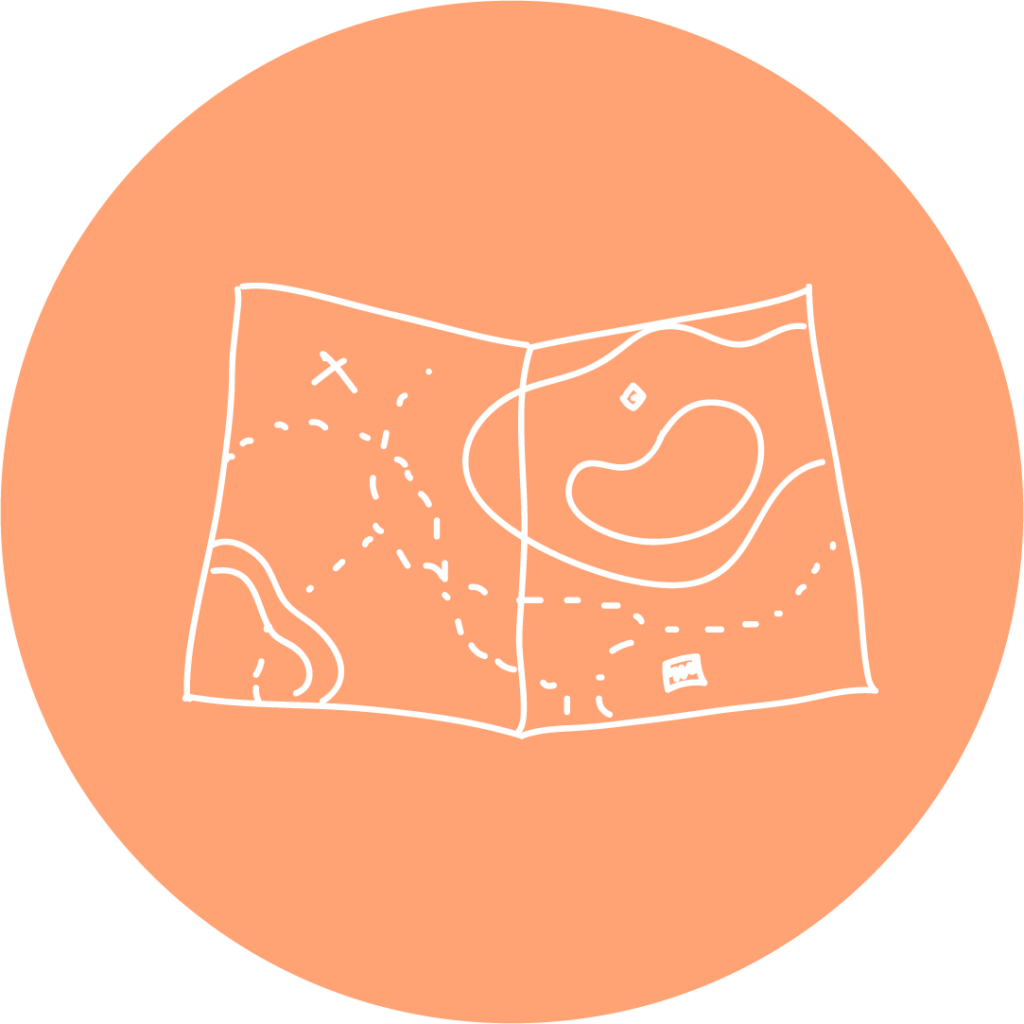Home / PHYSICAL MAPS
Recommended age: 8-18 years
Place: On site
Time required: 1-2 hours during one or two occasions
Material/tools: One map per child. Every child needs a writing pad, map and two pens in different colours.
Purpose: To investigate movement patterns and safety issues.
Where in the Process: Pre-study

The map as a tool has been encouraging for the children we met. Younger children relate to the map as a kind of mini world, while older children have a more developed symbolic thinking and are able to use the map in an ‘adult’ way. Maps can be used to understand how children move around in their daily lives and what their key destinations are, how their movement flows, where they feel safe and unsafe and where they feel comfortable. Maps are good for getting quantitative results. It can be easier to interpret the results from maps compared to when children draw their own mental maps.
One way we work with maps is that we take them out when we walk with the children. To investigate both movement flows and safety issues, it can be good to set aside two different times: the first focusing on movement flows and the second focusing on safety. The issue of safety is particularly important when it comes to child-friendly urban planning. To examine it and take stock of risks and opportunities in the area, we feel it is best to set aside a separate meeting for it.
Get writing pads and pens in two colours for all the children. Print out an A4 map in as many copies as there are children and stick them on the pads. If possible, print the map so that it does not cover the whole paper, but leave a column on the side of the paper where comments can be written.
Start both sessions by giving all the children coasters, a map and pens in two different colours. Let’s say you give them black and pink pens. The children are then given the following instructions:
Step 1 – Movement flows:
Session 2 – Safety issues:
Talk to the children, as much as you adults can during the sessions, about their thoughts. Use their own notebook to record their thoughts and to remember anything valuable that comes up.
End the meetings by letting the children show and tell each other about their maps. Do you find that some places are recognised as unsafe by several children? Or is there a big difference between what different individuals think and how they move around?
Working with maps is a good start to a feasibility study in a development process. On its own, it is less suitable because the method does not come to a solution but primarily maps problems.
This can be a good initial method in the pre- study!
We use cookies to give you the best experience on our website. If you continue to use this website, you agree to the use of cookies.
Vi använder cookies för att ge dig den bästa upplevelsen på vår hemsida. Om du fortsätter att använda den här webbplatsen godkänner du detta.